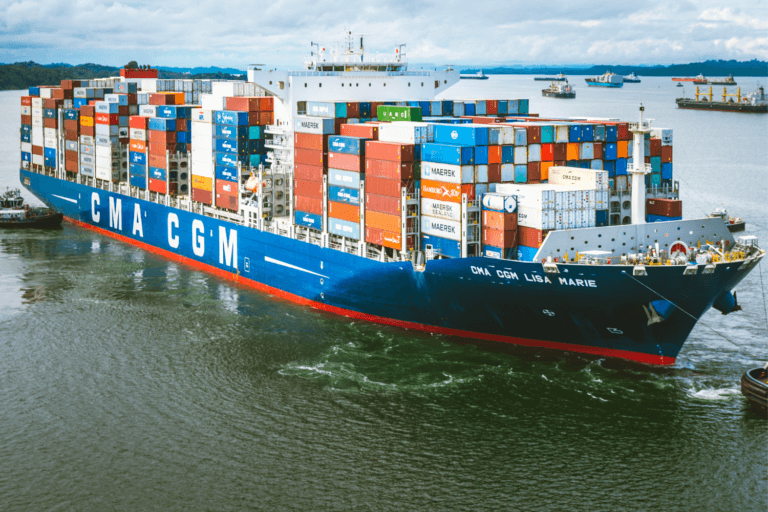The Bill of Lading is an official document that provides accurate and detailed information on all goods moving through the different international maritime routes.
Maritime transport is the backbone of international supply chains. In fact, recent statistics from the World Trade Organization (WTO) confirm that it accounts for more than 80% of world trade.
This requires trading and transport companies to use documents that provide accurate and detailed information on all goods moved by sea.
One of the most important instruments to fulfill this function is the Bill of Lading (BL), as it is validated by the United Nations Commission on International Trade Law (UNCITRAL), and by the different customs and commercial legislations around the world.
What is the Bill of Lading and what is its importance?
The Bill of Lading is the most important document for the movement of international maritime cargo for import or export.
Its functional and operational significance is based on the following specific functions:
- It formalizes the existence of a contract of carriage by sea.
- Identifies the type of cargo.
- Determines the ownership of the cargo moved.
- Establishes the ports of origin and destination of the cargo.
- Individualizes the shipping company in charge of the goods carried.
- Certifies the shipping company’s commitment to deliver the cargo safely and securely to the port of destination.
These functions position the Bill of Lading as an extremely versatile instrument.
In addition, it can be issued by various persons or institutions, such as:
- Shipping companies.
- Shipping agents.
- Freight forwarders.
- The master of a ship, or his official representative.
What information does a Bill of Lading contain?
In concrete terms, the Bill of Lading identifies all the characteristics of a shipment of goods.
Therefore, it should be as detailed, precise and descriptive as possible, especially when strategic and/or dangerous cargoes are being transported.
In this way it facilitates the work of all participants in the transportation and logistics chain, which are the following:
- Shipper: It is the one who sends the goods. Most of the time it is the company making the sale, i.e. the exporter, although in some cases it may also be the importer.
- Consignee: This is the company or person authorized to pick up the cargo at the place of destination. It is usually the importer of the goods.
- Notify: This is the person who is notified that the goods have arrived at destination. It can be the company itself or a customs broker.
- Carrier: This is the shipping company in charge of transporting the goods.
The data that a Bill of Lading must contain are the following:
- Type of commodity or cargo transported.
- Less Than Full Container Load, or LCL, type light shipments must include the number of packages and description of each package. For example, type of commodity and packaging, number of units, handling instructions, volume and weight.
- Heavy Full Container Load, or FCL, shipments must include, in addition to the above information, the number of containers used.
- Shipper’s data
Full name, telephone and e-mail address of the person sending the goods. - Consignee’s data
Full name, address, telephone and e-mail of the final receiver of the goods. - Notifies data
Full name and address, telephone and e-mail of the person to be notified of the status of the shipment (For example, “shipped at port of origin”, “on voyage” or “arrived at destination”). - Vessel details
Name and voyage number of the vessel on which the goods are being transported. - Place of initial receipt
Place where the shipping company takes possession of the cargo. For example, exporting/importing company’s facilities, port collection center or shipping company’s own warehouse, among other options. - Port of origin
Port where the goods are loaded onto the vessel - Port of discharge
Port where the goods will be unloaded from the vessel. - Place of delivery
Place where the goods will be delivered to the consignee.
What are the functionalities of a BL?
As an international document, the Bill of Lading has various functionalities, mercantile, financial and customs, among others.
Some of its main uses are the following:
- It is a proof that the goods have been shipped. In addition, it allows to leave evidence of the state in which it is, before being transported to the port of destination.
- It is a proof of shipment for customs and insurance procedures. It also proves that the contract between the import/export company and the shipping company has been fulfilled.
- It serves as a guarantee that the goods have been delivered to the carrier or shipping company for shipment by sea.
- It allows to prove the title of ownership of the cargo and the exclusive right of the consignee to claim its release at the port of destination.
- It may be accepted as a guarantee for bank credits, or to authorize partial or total transportation charges and credits.
How is a Bill of Lading issued?
The Bill of Lading has certain rules for its issuance. For example, there must always be three printed originals and several physical copies.
Once issued, it is usually delivered to the shipper, a freight forwarder or directly to the consignee purchasing the goods, through the customs broker.
Exporters must deliver at least one original printed BL to importers. This can be done through a courier express service, through a bank, or together with the goods.
This process is essential for the consignee or receiver to pick up the goods without problems at the port of destination.
What are the types of BL?
There are several types of Bill of Lading. These are mainly differentiated by the way they are issued, the way they are transmitted, the relationship between the seller and the buyer, or the protection that the document offers to the shipper.
These types of BL are as follows:
- Original BL: It is the one issued by the shipper of the cargo, so that its receiver can release it at the port of destination.
- Master BL: Issued directly by the shipping company.
- House BL: Issued by a Non-Vessel Operating Common Carrier or NVOCC. That is, an intermediary that undertakes to perform all the services of a shipping company, but without owning or operating vessels.
- Telex Release: It is the digital version of the original BL.
- Sea Waybill or Express BL: A copy without originals, issued when the shipper and consignee are part of the same company and do not require 100% formal negotiation.
- Switch BL: A second batch of printed documents, issued by an agent to replace the original BL. It is used as a substitute in case of loss or misplacement.
It is important to correctly identify the type of BL issued, in order to avoid misunderstandings or confusion in shipments.
It should also be taken into account that the BL is a legal contract, valid to certify a relationship between private parties, or to provide information to the tax and customs agencies of any country.
Therefore, it should never include false or incorrect information.
How to optimize Bill of Lading with technology?
The logistical, commercial and environmental challenges facing 21st century shipping demand the use of digital solutions to optimize information flows.
Such an evolution had a transcendental milestone in 2023, after the United Kingdom approved the implementation of the Electronic Trade Documents Act (ETDA).
This provision (which is based on the Model Electronic Transferable Records Act, established in 2017 by UNCITRAL), establishes a legal framework that favors equivalence between electronic trade documents and their paper counterparts.
As such, it represents a crucial step towards the global adoption of the Electronic Bill of Lading (eBL), which promises to streamline customs processes and increase the security of the entire supply chain.
At DataScope we are part of this effort, and that is why we have a digital platform and software specialized in inspections that provides complete traceability to maritime transport.
With DataScope your trading company or shipping company, can:
- Create detailed digital checklists to optimize the inspection of each maritime transport.
- Use mobile forms to verify the status of cargoes on the ship.
- Issue real-time reports.
- Maintain constant communication with the human teams involved in the loading, inspection and unloading process.
- Increase data security and minimize error margins.
- Streamline strategic decision making.
- Automate processes and integrate data with multiple transportation and logistics apps.
In this way, you will have permanent, personalized and centralized control of all your shipments, which will optimize your supply chain and your company’s competitiveness.







